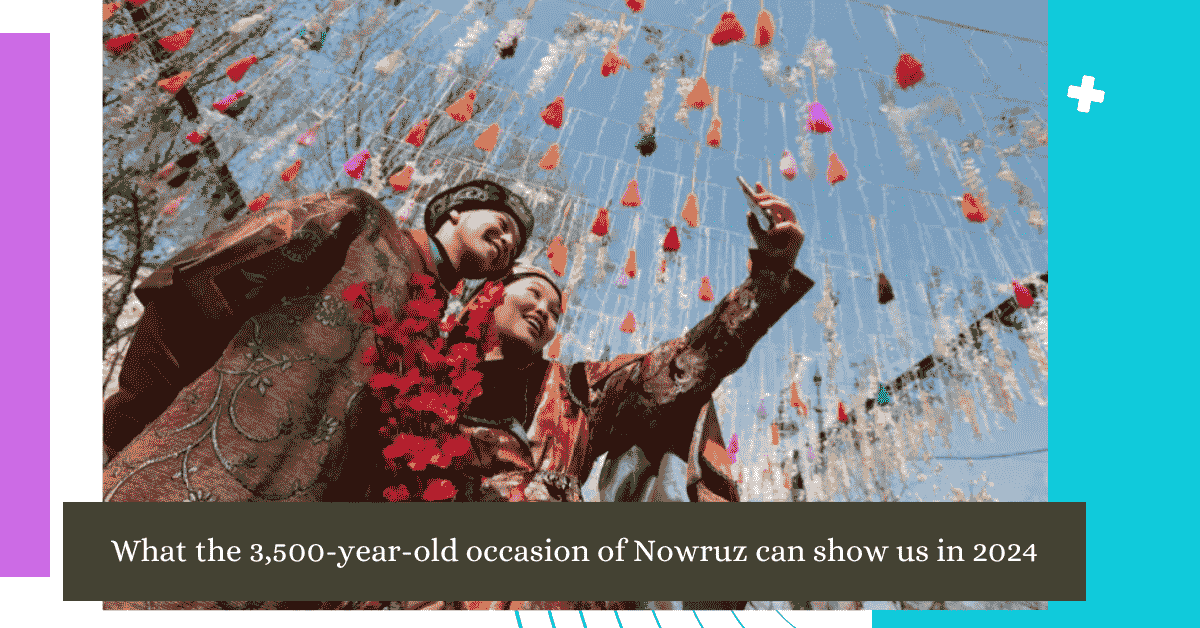What is happy Nowruz 2024 and how is the Persian New Year celebrated?

Happy Nowruz 2024 –
Nowruz – No-Ruz or Farsi for “new day” – is an old celebration praising the primary day of spring in the Northern Half of the globe.
In excess of 300 million individuals commend the Persian New Year, which has been noticed for over 3,000 years in various districts, including the Balkans, the Dark Ocean Bowl, the Caucasus, Focal Asia, the Center East and others.
Nowruz is a festival that denotes the finish of an old year and the start of another one and is praised upon the arrival of the cosmic vernal equinox, which ordinarily happens on Walk 21.
The festivals keep going for 13 days, and it’s a potential chance to ponder the past and set aims for what’s to come.
The celebration is established in Zoroastrianism, a religion rehearsed in old Persia that originates before Christianity and Islam.
As per The Unified Countries social organization (UNESCO), the arrival of spring has extraordinary profound importance, addressing the victory of good over fiendishness and happiness over distress.
“The Soul of Early afternoon, known as Rapithwina, who was viewed as driven underground by the Soul of Winter during the chilly months, was invited back with festivities around early afternoon upon the arrival of Nowruz as indicated by Zoroastrian practice,” UNESCO said.
The festival is essential for UNESCO’s Delegate Rundown of the Immaterial Social Legacy of Humankind, and the Unified Countries General Get together of 2010 declared Walk 21 as Global Nowruz Day.
Who celebrates Nowruz?
Given its starting points, the party is set apart in nations with huge Persian social impact, including Afghanistan, Azerbaijan, India, Kyrgyzstan, Kazakhstan, Pakistan, Turkey, Tajikistan, Turkmenistan and Uzbekistan.
It is additionally seen by minority networks in the Americas, and Europe, remembering for urban areas like Los Angeles, Toronto, and London.
How do people celebrate Nowruz?
The festivals fluctuate from one country to another, however a few normal customs are shared.
Some incorporate representative arrangements with fire and water and ceremonial moves that occasionally include getting around flames. The flares emblematically cleanse the awful encounters from the earlier year.
Before the beginning of Nowruz, a customary spring cleaning happens in the houses, while, during the festival, individuals rejoin with loved ones. Just before the appearance of the new year, families accumulate and trade wishes, with the oldest dispersing desserts and small kids getting coins and presents.
In any case, quite possibly of the main practice lies in setting up the Haft-Seen table.
Haft-Seen table during Nowruz
The Haft-Seen table, or the table of seven things that beginning with the letter S, is a family movement.
It as a rule begins by spreading an extraordinary family fabric on the table, and afterward it is trailed by putting the seven S things. These can include:
Sirkeh (vinegar): Addresses age and tolerance that frequently accompanies maturing
Sikkeh (coin): For abundance and success
Diviner (garlic): For good wellbeing
Seeb (apples): For wellbeing and regular magnificence
Sabzeh (wheat): For resurrection, restoration and favorable luck
Samanu (wheat pudding): A sweet pastry for riches, fruitfulness and the pleasantness of life
Sumac (berries): For the dawn and the festival of another day
Other than these components, the table could likewise incorporate a mirror to emblematically mirror the previous year, painted eggs to address fruitfulness, a goldfish to address new life, and candles to show light and joy.
An assortment of food dishes are ready during the party, however “debris e resteh” or noodle soup is normally served and is accepted to represent the “numerous potential outcomes in one’s day to day existence”, as per research directed by Harvard College.
Extraordinary desserts, including baklava and glossed over almonds, are additionally accepted to bring favorable luck and are shared during the festival. Different dishes incorporate fish presented with extraordinary rice with green spices and flavors, representing nature in spring.


